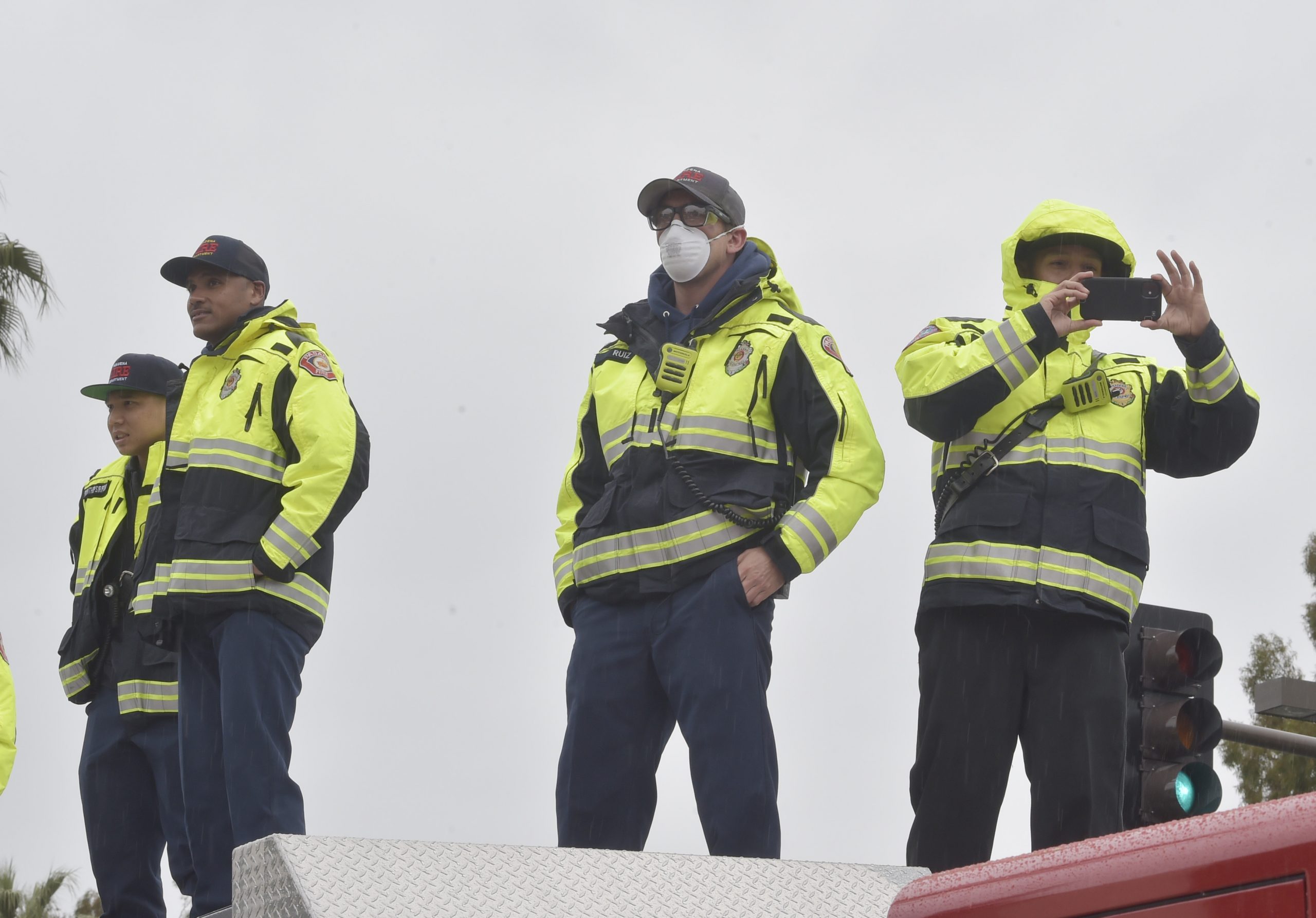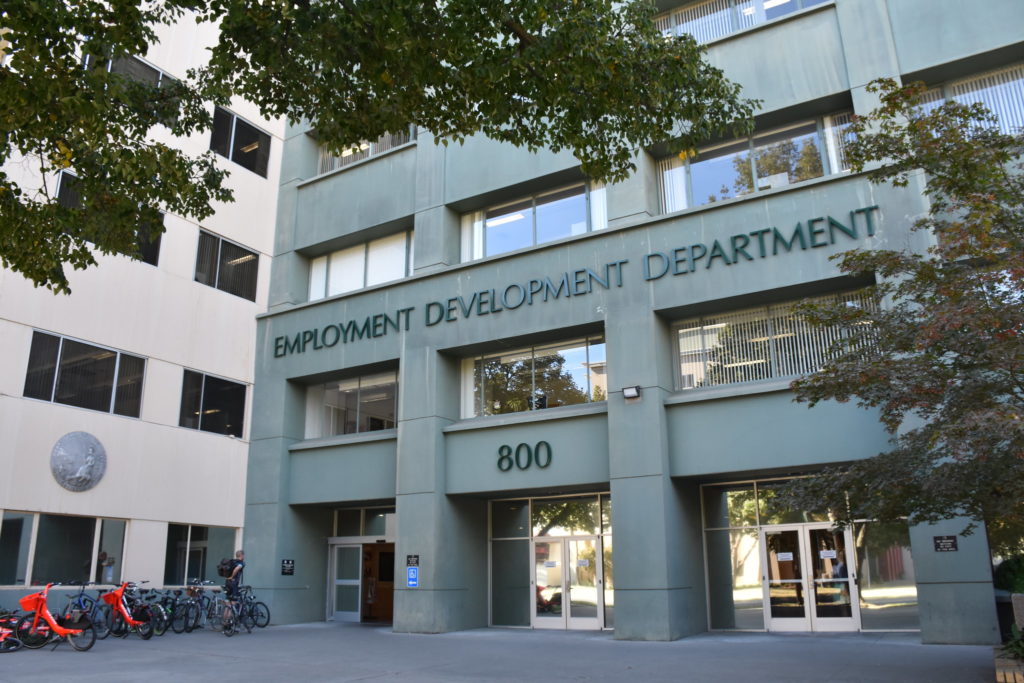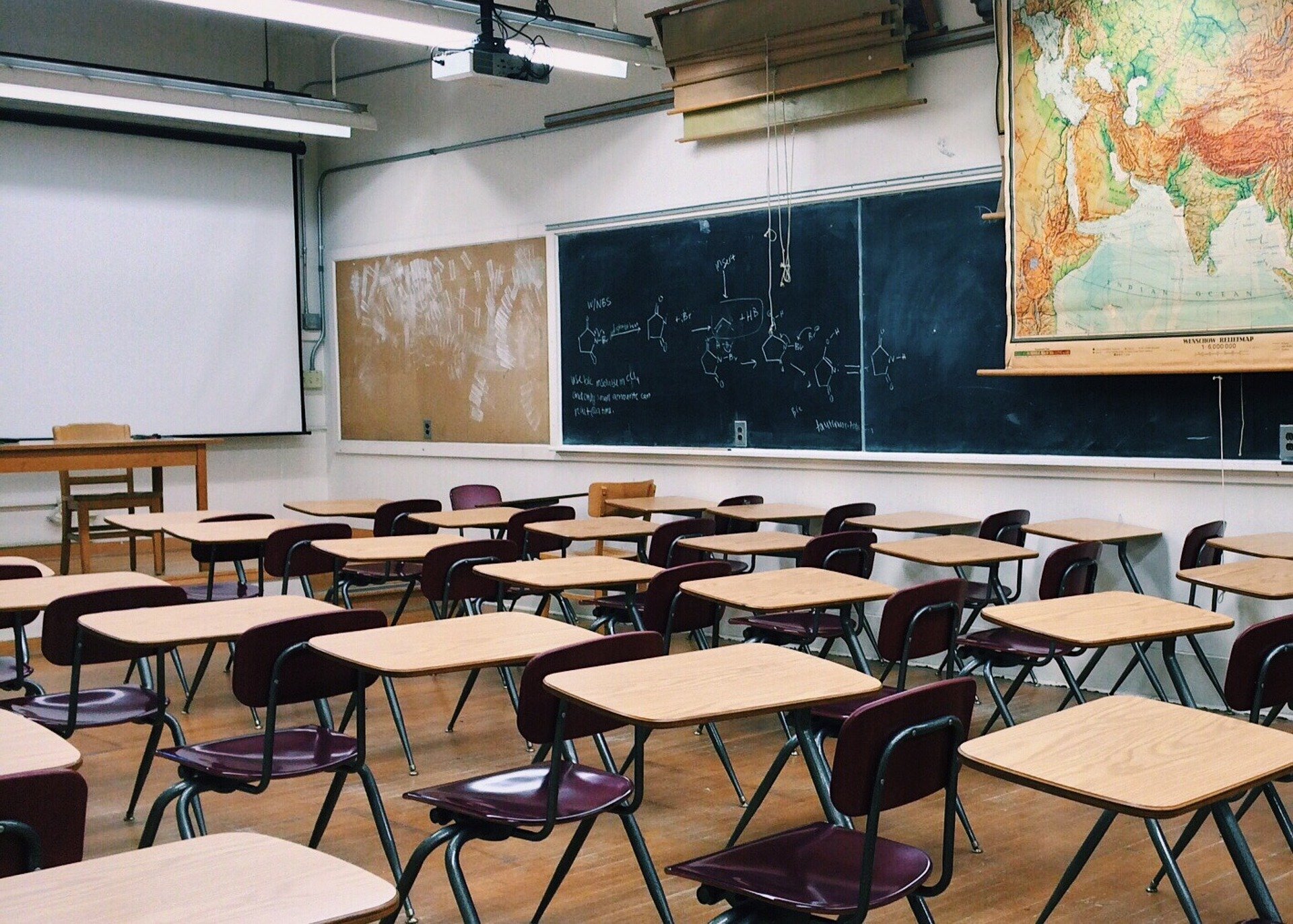
By May S. Ruiz
On March 13 this year, more than 12,000 public and private K-12 schools in California announced closures to keep children and teachers safe after the coronavirus outbreak. They sent students home for an extended spring break while school administrators and teachers scrambled to put together a curriculum and system for distance learning.
Except for a handful of high schools offering online courses, such as Stanford University’s Online High School which was established in 2006 for grades 7-12, virtual classes were a rarity. But that changed practically overnight.
To find out when schools in the western San Gabriel Valley started distance learning and how they are delivering it, I reach out by email to three public school districts and independent schools. What I discover is that local schools, fortunately, have the infrastructure in place to support virtual learning.
Furthermore, based on their responses to my questions, I uncover the amazing dedication and skill of administrators and teachers who, in very short order, found ways to teach and connect with students and parents. I am featuring them separately because I would like to do their work justice. And while each article will never be able to cover the depth and breadth of their efforts, it gives readers a good perspective of what’s going on.
Dr. Katherine Thorossian, superintendent of the Monrovia Unified School District (MUSD), says, “Most of our online classes began on Tuesday, March 17, 2020. The few that did not, began with packets. Our schools were fairly well prepared. Our teachers and administrators have been training on various virtual platforms, with special emphases in Google Classrooms and the Google Suite of tools, systemically for the past five years. Our schools distributed devices to those students who did not have a personal tablet at home. We conducted a survey to see where the needs were and have worked diligently to fill those needs.”
I inquire how the district is supporting teachers and students in this new way of schooling. Replies Dr. Thorossian, “Teachers are meeting weekly with their principals in Google Hangouts. Teachers are receiving ongoing professional development from Instructional Specialists who support them with the technology and the content areas. Each school has two to six teachers (depending upon their size) who have been highly trained in technology tasked with being a support to the teachers on the school site. Two technology hotlines have been created – one for teachers and one for students/parents.
“Teachers are contacting students who have not accessed the content to make sure there are no issues with technology and to make sure every student remains connected with their teachers. Additionally, counselors are not only providing office hours, but are reaching out to students with whom they had previously scheduled regular ‘check-ins.’ Counselors are also meeting virtually with existing groups for group counseling sessions.
“Instructional Specialists created two weekly newsletters: one to support teachers and another to support parents.
“While everyone is working at different times and locations in order to practice the safest of precautions, we are still ‘open.’ Teachers and administrators are still accessible and responding in a timely manner. Schools and offices are still answering and returning calls and emails.
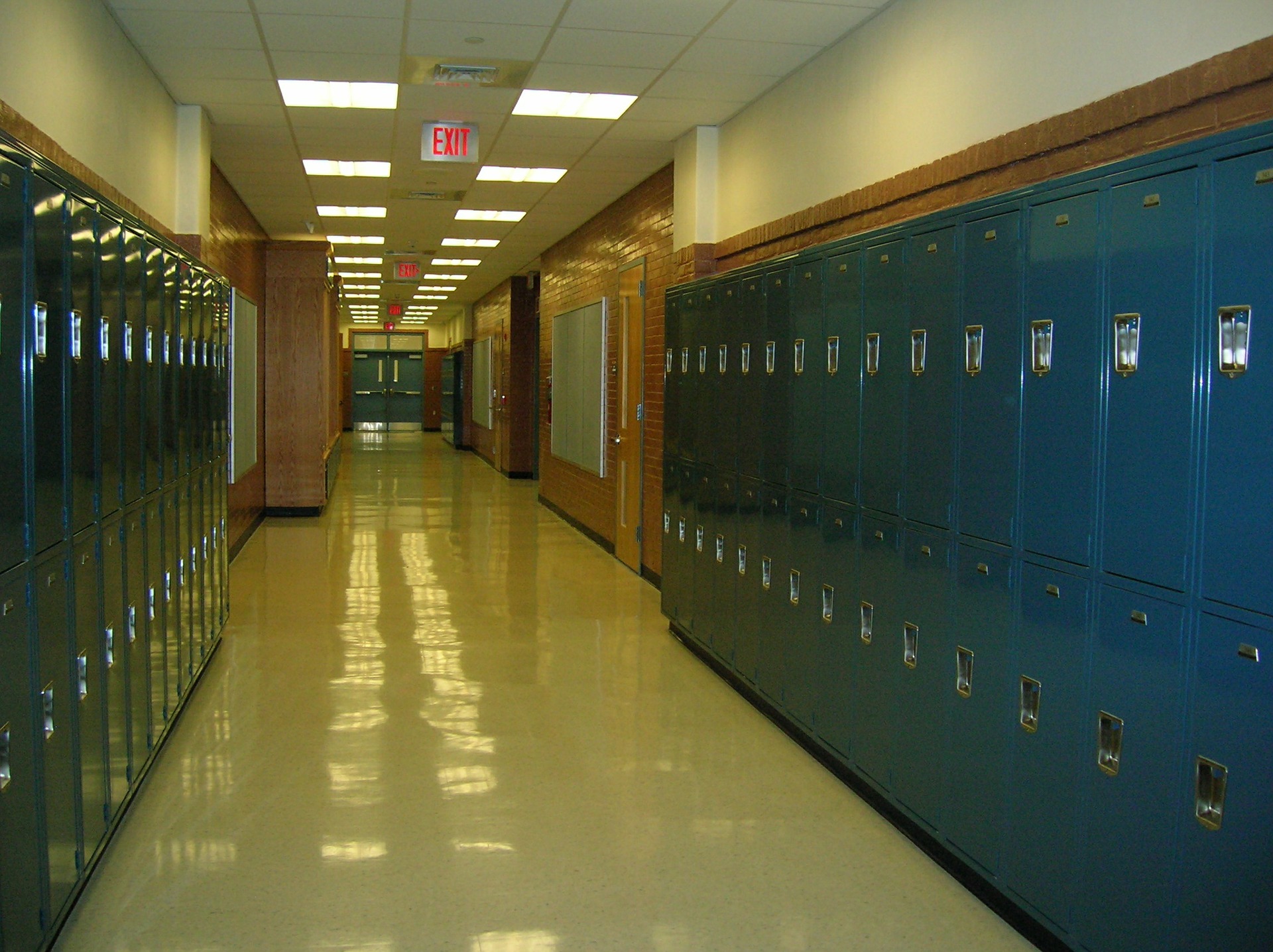
Dr. Thorossian elucidates on how the district monitors progress, “Principals have been ‘invited’ into the Google Classrooms on their virtual campus and ‘walk through’ classes in order to be aware of how things are going ‘on campus’ and to provide support where needed. Principals have daily check-ins with members of the district office team. We created an online platform that has a lot of information for parents, teachers, and students. It is a dynamic site that we continue to fill with new information and resources. It may be accessed through the main page of our website, and I encourage people to check it out as without it, they will not get a complete picture of the work being done.”
Asked if there is any assessment in place to determine if students are learning, Dr. Thorossian remarks, “An essential element in the learning cycle is feedback. Teachers provide feedback in many ways to their students and, in that way, monitor the progress they are making in class. Standardized tests have been suspended this year in California. We are still working to determine the best manner in which classroom assessments should be administered.”
Jennifer Maljian, an Instructional Technology Specialist for MUSD who also happens to have two children attending schools in the district, describes her function, “My colleague, Chad Miller, and I have been trying to set up spaces and times that teachers who have questions have a place to have those voiced. We send out a weekly newsletter with distance learning tips and a video message from us. We also hold weekly Q&A sessions via Zoom to discuss topics related to Google classroom, distance learning through the student lens, and time set aside for teacher questions. We’ve had a very good turnout for those, thus far. Our goal is to continue these platforms for teachers throughout the duration of the distance learning.
“We have completed two weeks of distance learning – we’re currently on week three, but it’s officially our Spring Break. I can pretty much bet that teachers are using this week to really plan and prep for the next weeks to come!”
Markiena Madison teaches about 145 students in her 6th and 7th Science and Social Studies classes at Santa Fe Computer Science Magnet School. She explains, “My classes are conducted through Google Classroom, which is the platform I’ve been using for four years now. In addition to that, I screencast a lot of my teaching so students can view it at their own pace and work through it. I use Nearpod lessons for teaching as well. Lastly, I conduct virtual class meetings using Zoom to keep the connection with them, check-in, and to laugh a bit.”
“I have pre-created templates readily available for use and I also make new templates based on what I want them to learn/demonstrate for the day. Those templates include graphic organizers, vocabulary organizers, and fill-in forms using Google.”
As to student participation, Madison says, “It’s not a big issue when we’re using Zoom, but sometimes students don’t want to participate visually, so they close/turn off the camera. However, they do stay social using the audio. The biggest hurdle is motivating the students that were already struggling to do the work at home and the lack of face-to-face contact which makes a huge impact on engagement. In addition to that, making sure they complete all the assignments without the same in-class instruction.”
Madison notes, “Most of my students, during our virtual discussions, have stated that they already want to come back to school – even those students that don’t like to come to school. Which proves the saying, ‘You don’t appreciate something until it’s gone.’”
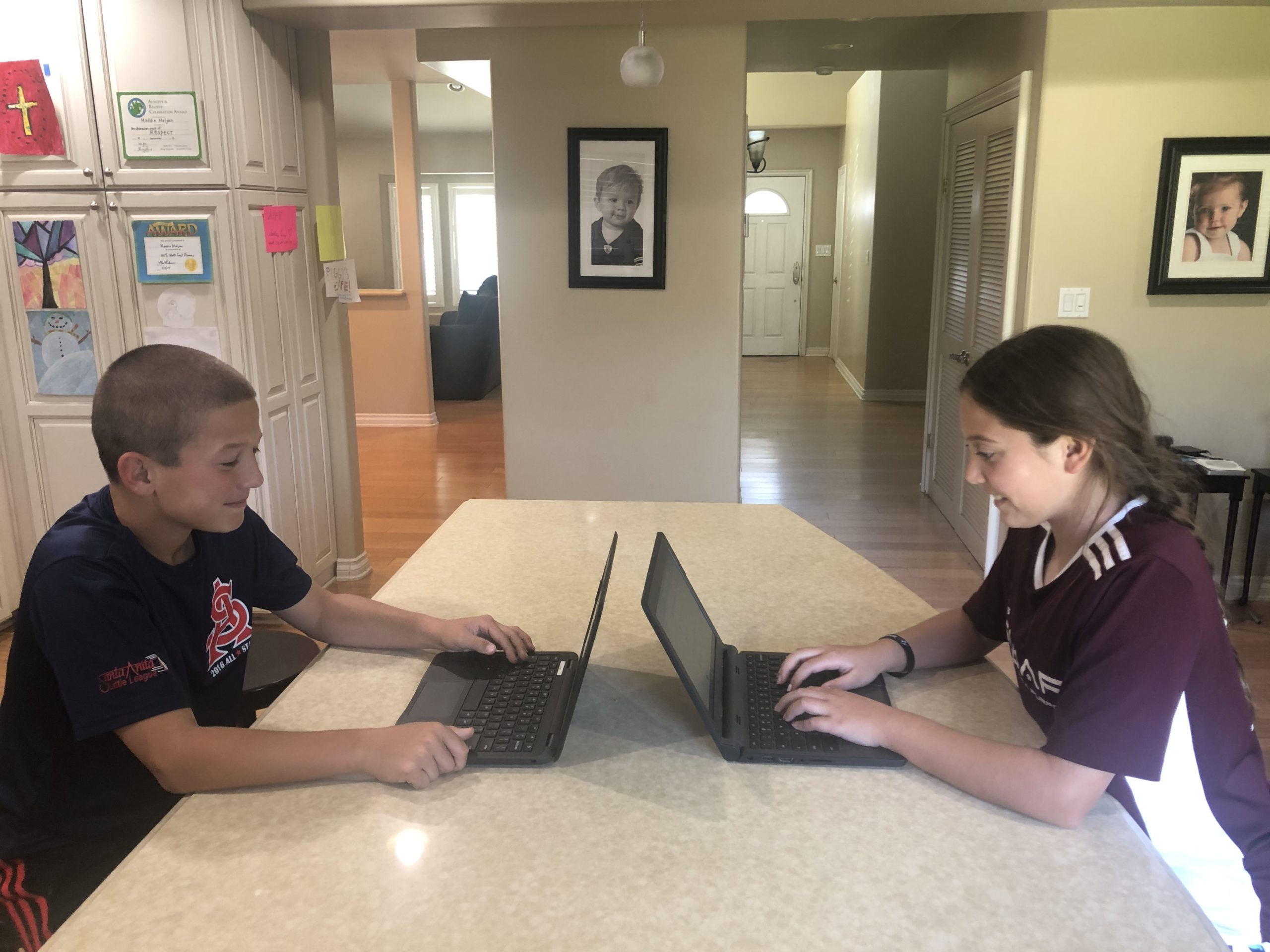
At Clifton Middle School, Gina Ayala teaches 101 6th grade and 67 8th grade students. She says, “The model I used for teaching was initially quite fluid – it felt like a beta test. Additionally, the first days were focused on assessing which students had access to technology (cell phones only, home WiFi, tablet or computer with full keyboard etc.) The technology access determined my expectation during the first days of quarantine.
“As we enter week three of distance learning (April 6) following our Spring Break, I plan to use more of a template. For example, assignments posted on Monday & Wednesday, activity on Friday with certain ‘office hours’ posted per grade level and specific class Zoom sessions scheduled by period. My hope is that a routine which allows flexibility will suit the academic and social needs of my students.”
Ayala tries to make sure students participate, “During teleconference, I use the same equity cards I used in the classroom to randomly call on students for response or contribution. I also use the private comment feature on Google Classroom to address a student. I’ve called parents and sent emails to families to gather information on why a student may not be responding to a Google Classroom prompt. Additionally, my grade level team (8th grade) has decided to work to get our students on the same schedule so all 8th grade science students will know the expectations for the week ahead. This will help with friends being able to help friends even if they don’t share the same teacher. I believe this will definitely help engage students who aren’t actively participating.”
“Initially, the biggest challenge was determining what type of digital access was available to each and every student. I need to be able to reach EVERY student,” Ayala adds.
“The learning curve for many teachers was very steep – switching, with virtually no notice, from the classroom to the virtual classroom,” comments Ayala. “My colleagues have been extremely helpful and inspiring. The amount of new apps, teleconference platforms, emails regarding distance learning, webinars, YouTube links, in addition to the plethora of resources pushed out by our district can be daunting. I have gone down the internet rabbit hole of amazing resources available. Knowing that too much information can cause a mental shutdown, I want to be mindful that my students aren’t experiencing that with new learning styles necessary in each of their ‘virtual’ classrooms. The silver lining is how much I have learned in such a short amount of time – the most practical, self-directed ‘professional development’ I’ve ever experienced. I cannot overstate the gratitude I feel towards my colleagues who have been both professionally collaborative and personally entertaining (videos, memes, FaceTime, Hangouts, virtual Happy Hours).
Clifton Middle School principal Jennifer Jackson voices her reservations and offers her insights. “Distance learning has its advantages at times, but the circumstances in which we entered into it made it difficult. Teachers are not used to digital platforms of learning but rather rely on technology tools when appropriate during lessons. There is quite a difference here. I feel the Clifton teachers have done a tremendous job embracing their new normal and providing a reasonable and accessible curriculum in all subject areas including physical education and electives.
“However, I do have concerns with accumulated screen time for students as we endure school closures. We will continue to learn and provide teachers the resources they need to become more confident with distance learning in addition to providing support for students. We will have much to reflect upon when this is over and I do wholeheartedly believe schools will benefit from all of this in the long run.”
The most important component of the remote learning platform are the students and it would be remiss of me not to ask them for their thoughts. I reach out to Maljian’s children – Madison (Maddie) and Micah.
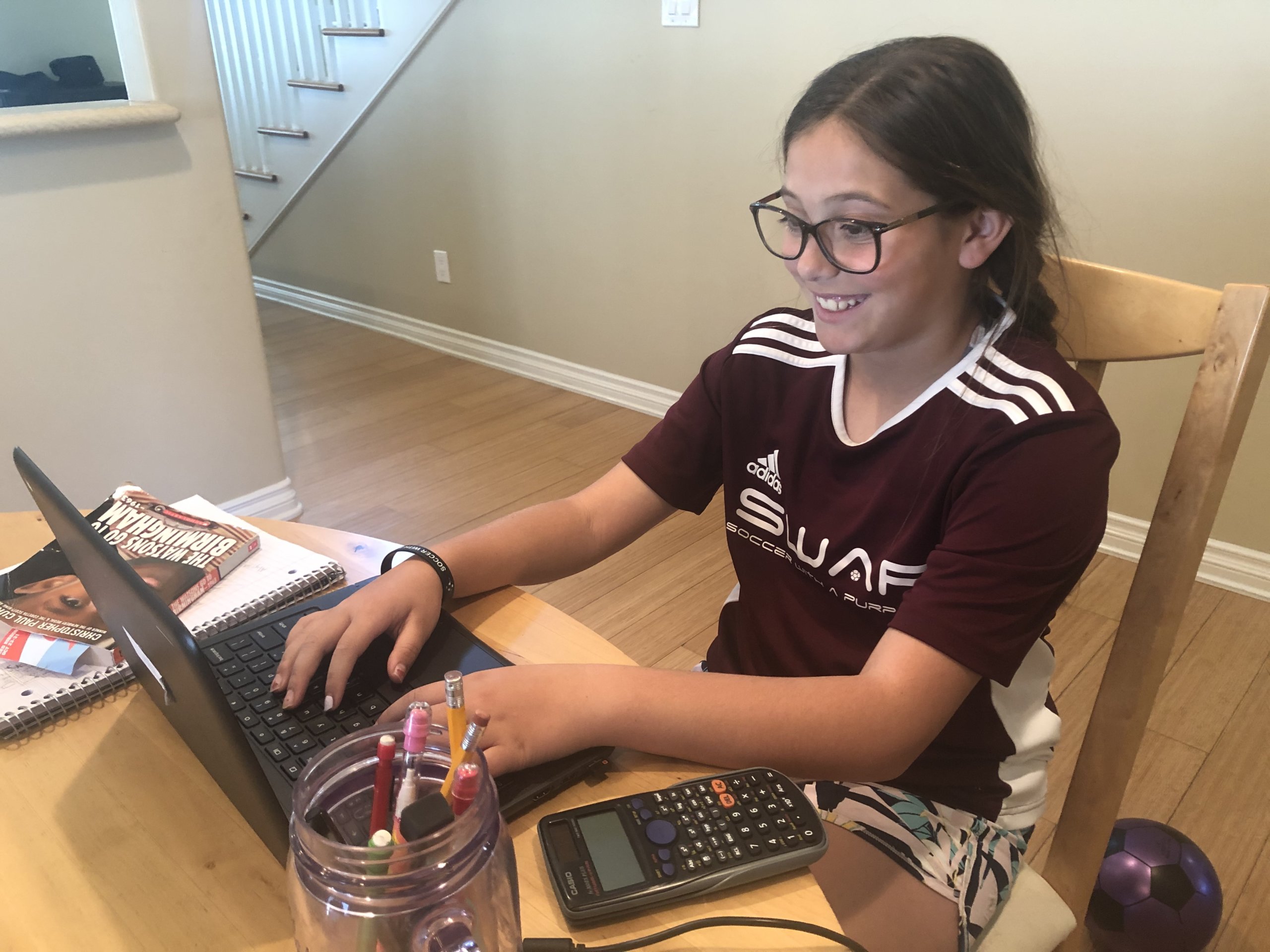
Maddie is in 5th grade at MUSD’s Plymouth Elementary School. Responding to my question on how she receives her online learning, she writes, “My teacher, Mrs. Kim, posts an agenda in Google Classroom each day using a Google Doc that includes hyperlinks to each assignment, activity, or Hangout we are to join for the day. She also includes a friendly morning message to us each day. In addition, she also sends the same Google Doc agenda to my parents through the Remind app each morning.
How do you motivate yourself to learn when you’re not actively participating in class? I inquire. Maddie answers, “When we started Distance Learning, I sat down with my parents and we discussed a schedule for each day that would include waking up, getting dressed like I’m going to school. I wrote down on a piece of paper what I needed to complete for the day so I could check items off as I finished them. I also tell myself each day I can do it!”
I ask Maddie if she had any challenges because of this new method and if she reached out to her teacher for help. She discloses, “ I struggled one day with WiFi at my house, and I was unable to join a Zoom with my class. Once my family figured out the WiFi issue, I contacted my teacher through Google Hangout and she filled me in on what I missed. My biggest hurdle is missing my teacher and school friends and trying to find ways to still connect with them.”
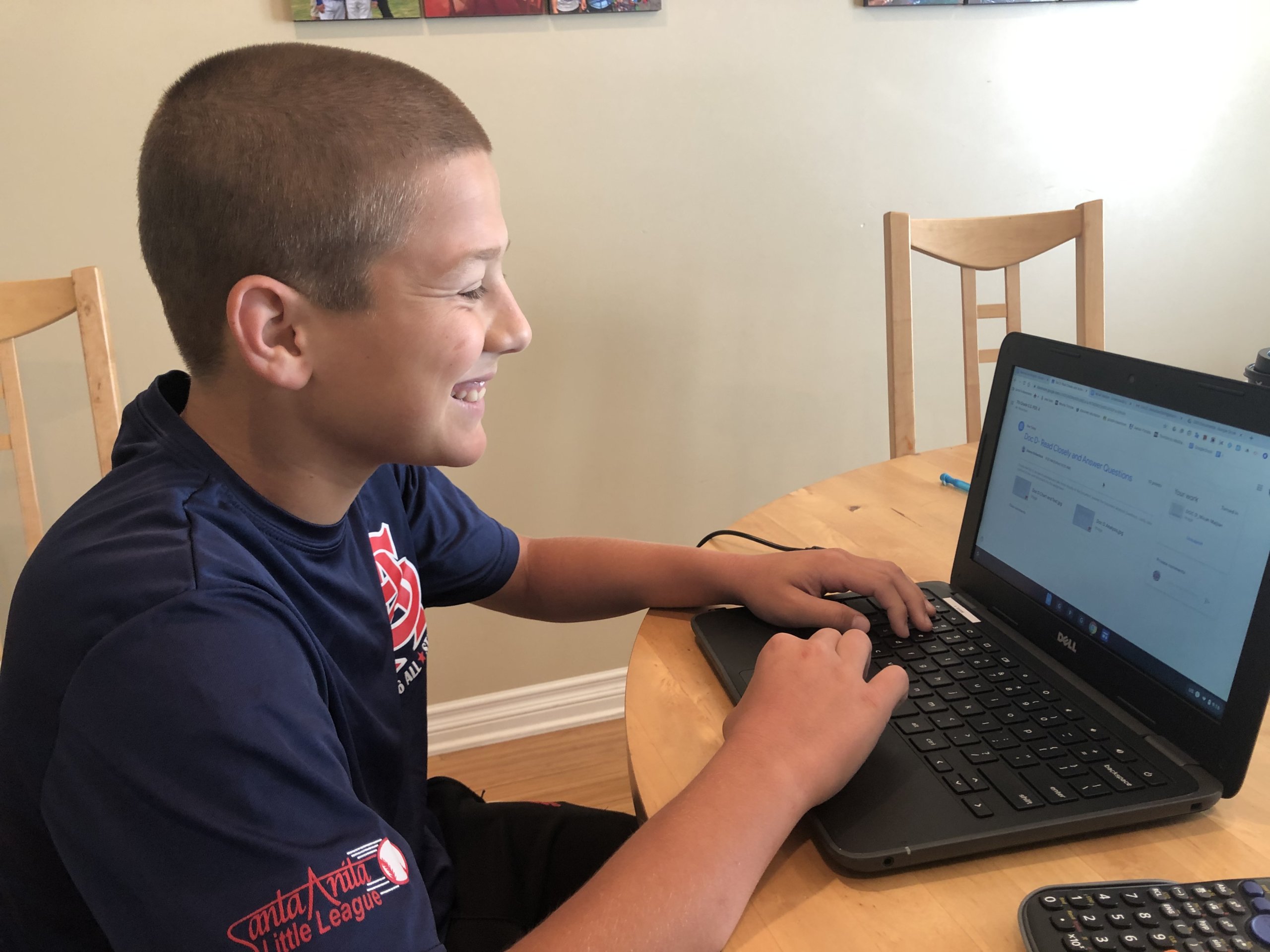
Her brother Micah, who is a 7th grader at Computer Science Magnet School, reports “ I get updates in Google Classroom from all of my teachers. Each teacher posts a check-in question and an assignment or activity as well as a video, almost every day. The videos are awesome – some teachers tell jokes, sing songs, perform Santa Fe cheers. It makes me feel like I’m still at school, even if only for a few minutes.
“My mom and I sit down every morning and we create one sheet that includes all of the items I need to complete that day. As I finish them, I am able to check them off. I also include break times for myself where I can practice baseball, juggle the soccer ball, and play basketball in my backyard.”
“The biggest challenge I’ve had so far was figuring out what format a teacher wanted a document submitted through Google Classroom. I emailed that teacher, and they got back to me very quickly and walked me through exactly how I needed to do that. The most difficult hurdle to overcome in this sudden change in my learning is missing my school, my classmates and friends, and my teachers. I really wish I could go back to school, but my teachers are doing everything to make it the best experience for us,” Micah ends.
Their mom adds, “My two kids have had really positive experiences with online learning. We’ve only run into the WiFi being a bit spotty which requires leaving an assignment for a while until we can get the WiFi up and running and then coming back to the assignment to finish it.
“It’s definitely a quick learning curve for everyone, but on a daily basis I am BLOWN away by how amazing the teachers in MUSD are! We are very lucky to have such rock stars teaching our kids! Their energy is magnetic and is what has continued to make my kids want to get up each morning – to see the video messages they send their students and the fun ways they’re incorporating silly things like crazy hat day, or how many jumping jacks can you do in 90 seconds. The heart of a teacher is nothing short of a miracle to these students right now!”
During this safe-distancing and remote learning period, we are once again reminded that humans are hard wired for social interaction and the classroom experience cannot be virtually replicated. Students, as much as teachers, are in school not only for the academics but for the physical contact and friendship.
However, it is also during trying times that we see human beings come together – school administrators and teachers united to ensure continuity in student learning. We accomplish extraordinary things when we rise to the challenge.

